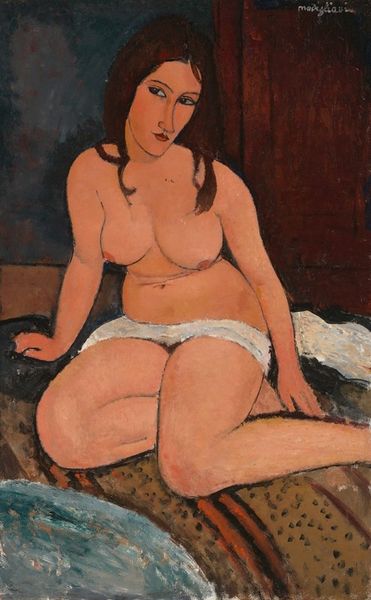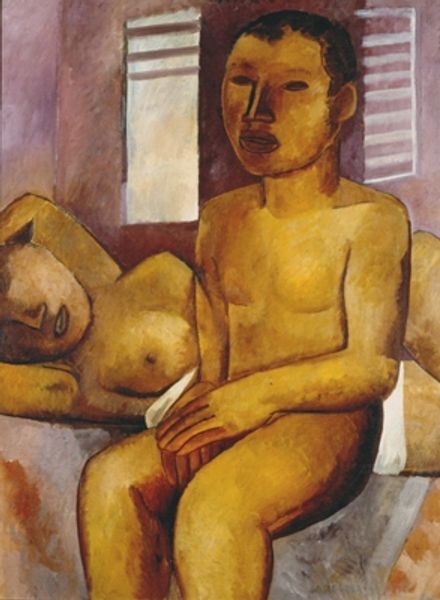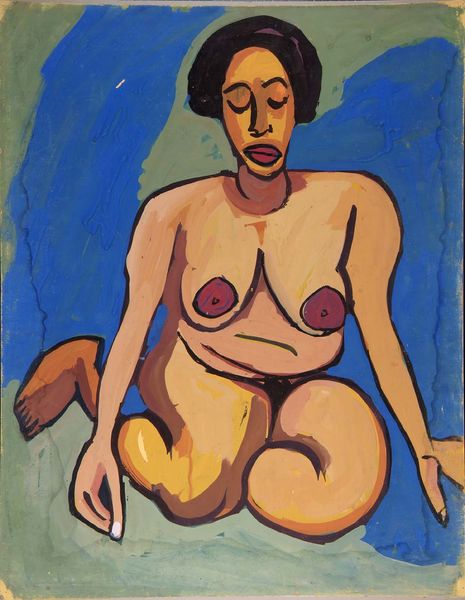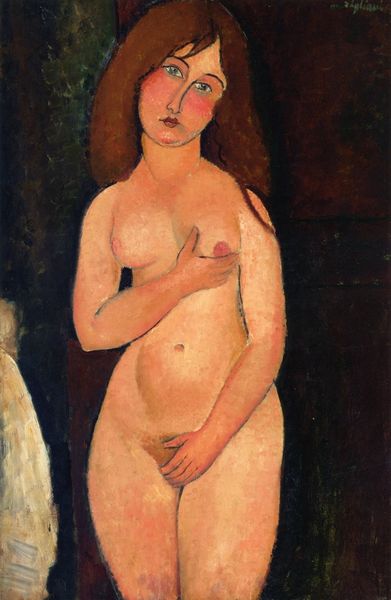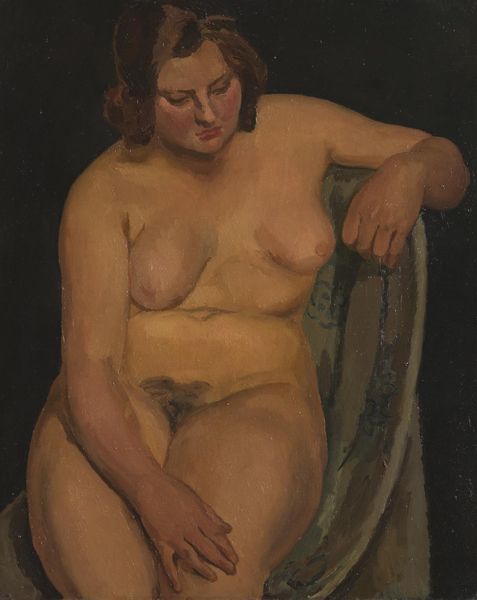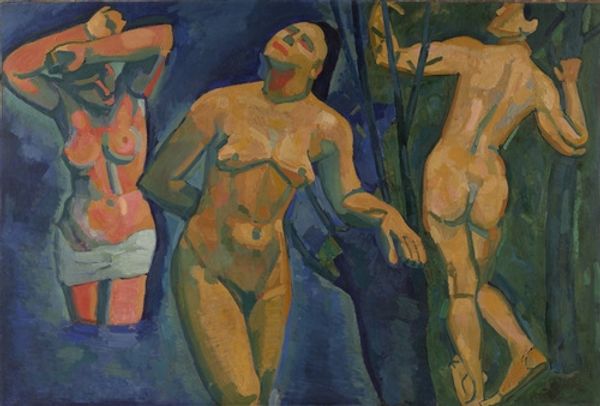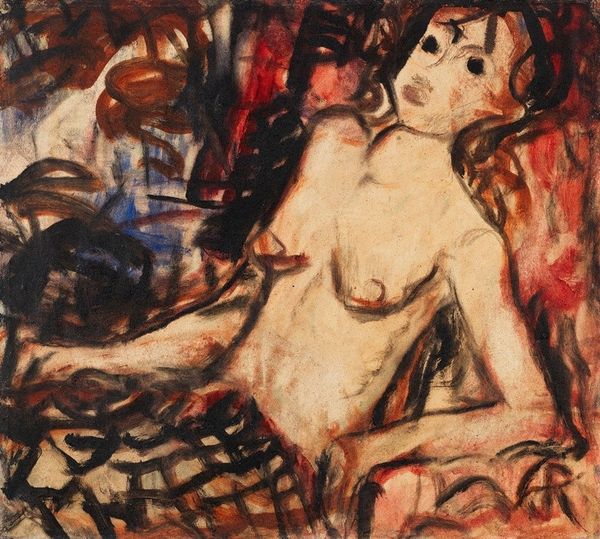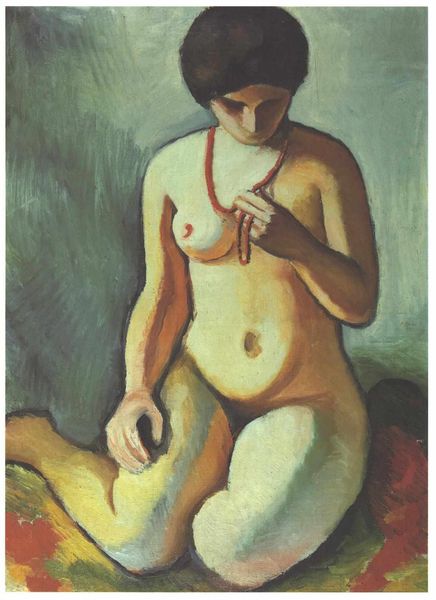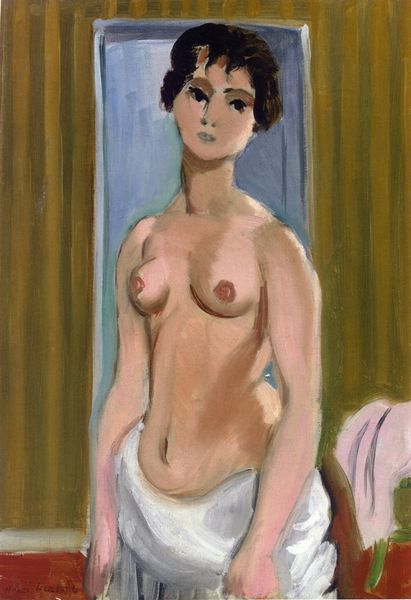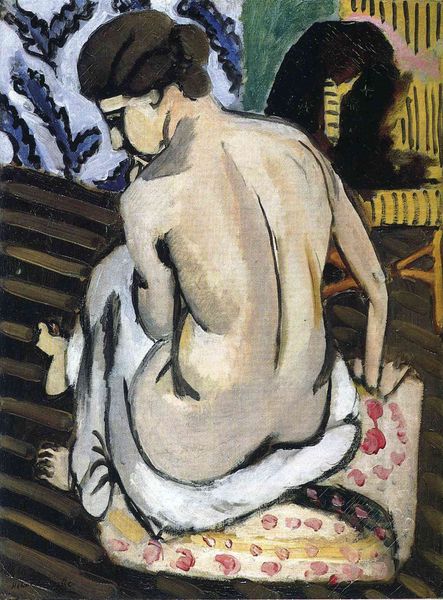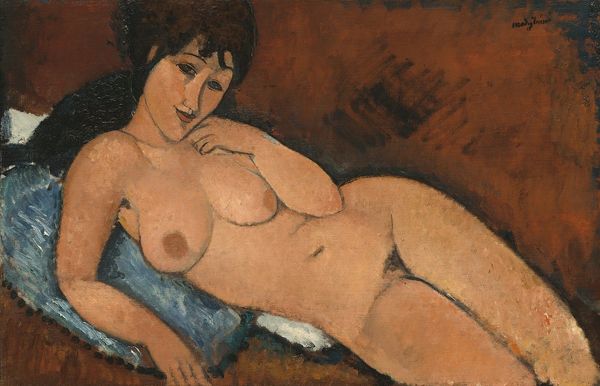
painting, oil-paint
#
portrait
#
painting
#
oil-paint
#
figuration
#
social-realism
#
oil painting
#
expressionism
#
nude
Copyright: Alice Neel,Fair Use
Editor: This is Alice Neel's "Ethel Ashton," an oil painting created in 1930, and currently residing at the Tate Modern. The directness of the gaze, combined with the somewhat unconventional representation of the figure, makes it quite a striking portrait. How do you interpret the compositional choices here? Curator: Focusing on the formal elements, the most compelling aspect of this work lies in its calculated distortion. Note how the artist employs an almost brutal honesty in her depiction. Observe, in particular, the lines defining the subject's form – they are neither softened nor idealized, but rather rendered with unflinching candor. How do you feel that choice impacts the viewer's perception? Editor: It does make you confront the subject more directly, perhaps stripping away a layer of artifice we're accustomed to in portraits. Curator: Precisely. The interplay between the stark realism of the figure and the almost abstract patterns in the background also deserves scrutiny. The contrast between the organic and the geometric adds a certain tension. It invites questions about the relationship between figure and ground, and the ways in which our perception of the human form is influenced by its surrounding environment. The expressiveness in her color usage evokes emotional response in the audience as well, doesn't it? Editor: It does. It’s interesting to see how focusing on these formal elements really shifts my understanding from just seeing a nude to analyzing the specific artistic decisions. Curator: Indeed. And, of course, formalism allows the exploration of these choices in conjunction with the art's place in history as well as potential meaning derived from such historical study. What begins with form never really stops there.
Comments
No comments
Be the first to comment and join the conversation on the ultimate creative platform.
